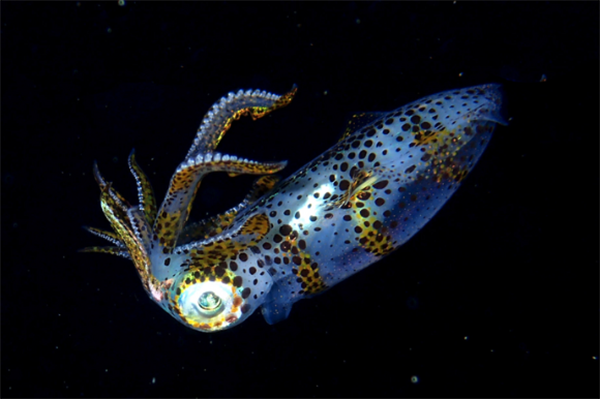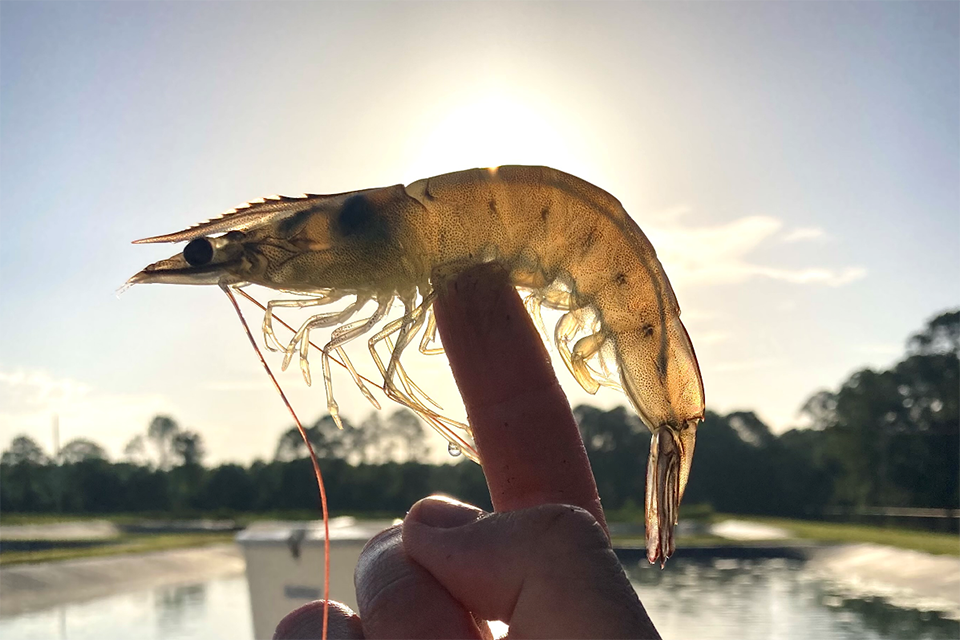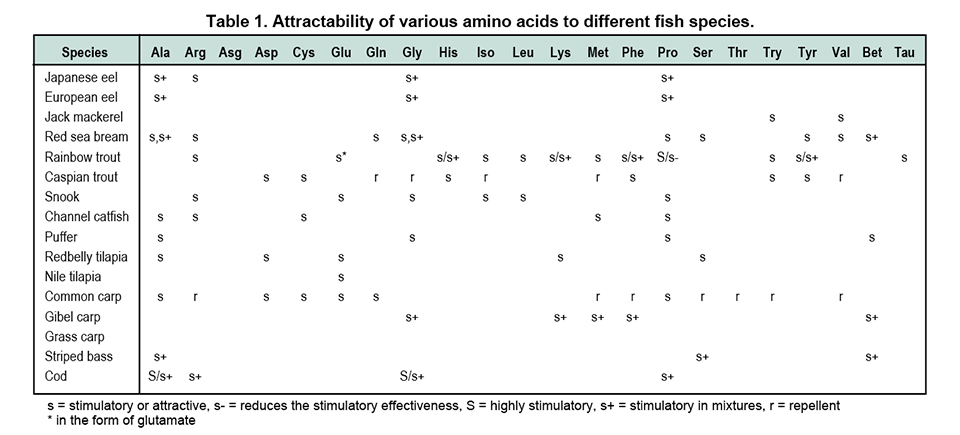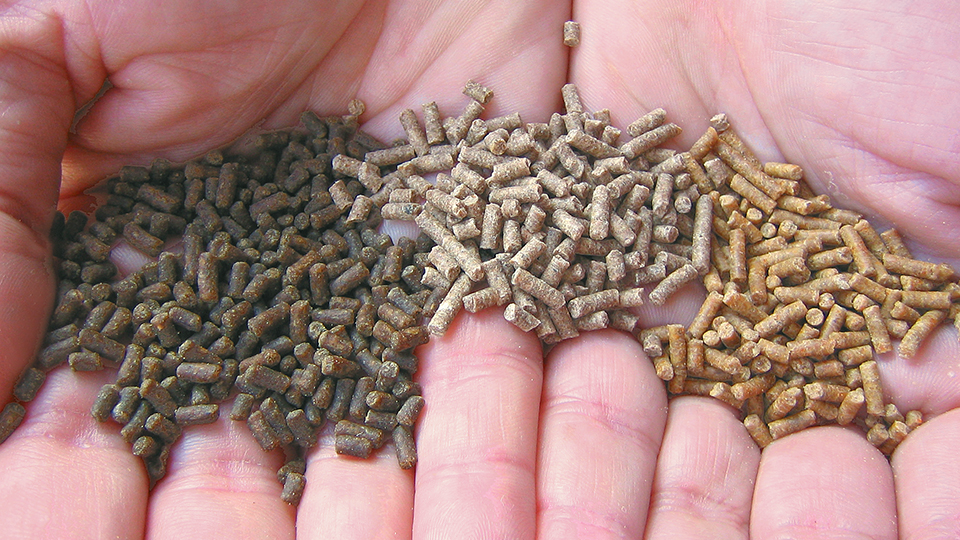First squid aquaculture system with potential for commercialization has been established

Over the last decade, scientists have reported that the world’s octopus and squid populations are “booming” due to overfishing and the effects of climate change. But recently, Japan has been dealing with the opposite problem: All the species of squid in their waters have been declining since the 1980s and their estimated population sizes are just 10 percent of what they previously were.
“The annual squid harvest in Japan peaked in 1989 at 733,594 tons per year; in 2018, it declined to 83,593 tons per year,” Dr. Ryuta Nakajima, visiting researcher the Okinawa Institute of Science and Technology (OIST), told the Advocate. “All commercial species are impacted, including the in-reef cuttlefish fishery.”
A squid is a type of cephalopod with an elongated body, eight arms and two tentacles. Globally, there are at least 300 species of squid distributed across the world’s oceans and serve as a healthy food source packed with high-quality protein.
According to Nakajima, the global cephalopod catch is “unstable and fluctuating.” Pointing to the FAO 2019 Annual Report, squid catches increased from 3.1 million tons in 2000 to almost 4 million tons in 2015, but then dropped to 2.8 million tons in 2016, causing experts to worry about the state of the resource. During this period, the prices also increased dramatically.
“Such species as Sepia officinalis in the English Channel and D. gigas in Peru had some great years,” said Nakajima. “However, they do not represent the other cephalopod fisheries. Global warming can have both positive and negative impacts on [global] fisheries.”
Lighter catches in Japan have been attributed to the effects of climate change, as the changing ocean temperature hinders the spawning and growth of the squid, as well as poor regulatory oversight and overfishing.
“There are many speculative reasons for this, such as global warming and seawater temperature increase around the islands, which is pushing the Kuroshio current away from the island,” said Nakajima. “Also, a general overfishing around the region, lack of conservation effort and dependence on cheaper imports, declining natural habitat of coastline Japan, and so forth.
“The island’s coastal oceanic environment is changing. The main island of Japan is located at the meeting point of the Kuroshio current (warm) and Oyashio current (cold). The balance between these two currents is essential for a healthy Japanese fishery.”
The most important squid species that is carefully monitored is the Japanese flying squid (Todarodes pacificus), which is caught off the northern island of Hokkaido as well as the Pacific Ocean and Sea of Japan coasts. It’s considered to be the top-five essential fishery species and according to Nakajima, the annual catch declined from 668,364 tons in 1968 to 47,714 tons in 2018. Overall, the squid shortage impacts local people’s diets and livelihoods.
“Cephalopods such as octopus, cuttlefish and squid have been essential to the Japanese diet and cultural icon,” said Nakajima. “Squid has provided a vital, healthy protein for the general population, especially low-income families. Hence, it has been part of Japan’s top five most crucial seafood. The decline of the natural squid stock will significantly alter the Japanese diet and culture.”
The situation has become so dire that Japan – which has one of the highest rates of fish and seafood consumption globally – now relies on imported, processed squid from South America. Some innovators are turning to squid aquaculture for solutions, but it’s not an easy fix.
“Generally, people think that aquaculture is easy but actually it’s quite challenging,” said Dr. Zdenek Lajbner, who is responsible for squid culturing within the Physics and Biology Unit at OIST. “Take, for example, Japanese eel and tuna. Marine scientists have been trying to develop aquaculture for these two animals for decades. Despite that, both markets still predominantly rely on wild catch.”
For the last 60 years, scientists have been trying to establish squid aquaculture with minor success. Successfully rearing squid in a way that’s compatible with aquaculture is challenging due to several of the animal’s traits, such as their aggressive behavior, sensitivity to water flow, food preferences and complex lifecycle.
Squid has provided a vital, healthy protein for the general population, especially low-income families. Hence, it has been part of Japan’s top five most crucial seafood. The decline of the natural squid stock will significantly alter the Japanese diet and culture.
But the tides could be turning, as the researchers from the Physics and Biology Unit at the OIST claim to have developed the first squid aquaculture system that has the potential to be commercialized.
“This is a ground-breaking step towards the development of sustainable squid farming over multiple generations,” said Prof. Jonathan Miller, who leads the unit.
The invention has not only closed the lifecycle of the squid, which the researchers say is a significant challenge in itself but it’s also done in a way that’s “efficient and cheap enough” to be commercialized. Dr. Lajbner highlighted that the system specifically focuses on providing good conditions for spawning and hatching.
“We applied knowledge from different parts of aquaculture and made a lot of adjustments,” said Nakajima. “Compared to my experience in two other labs, the hatching and survival rate of the animals is much higher here.”
This aquaculture system is aimed at a group of species called oval squid (Sepioteuthis lessoniana). Okinawa has three species of oval squid, with the ocean around mainland Japan having one or two.
“We hope that the farmed squid will reduce the pressure on the squid stock in nature in both local and global water while continuing to provide healthy and sustainable seafood to the Japanese,” said Nakajima. “Furthermore, the technology could also be used for many other communities worldwide that depend on squid as their staple diet.”
Compared to previous attempts, Lajbner said that this system is unique from any previous attempt at squid aquaculture.
“We don’t know about any comparable currently running project,” said Lajbner. “In the past, other researchers achieved seven consecutive captive squid generations, while we have already achieved ten. Our system represents currently the only option for culturing specific strains of loliginid squid (including genetically modified strains).”
Lajbner also said that the system “reliably and predictably” produces live squid, while wild catches are unpredictable. Squid catches are much harder to predict than fish. It’s also fast-growing: three months minimum market size for food (5 months minimum life cycle), and offers controllable quality (e.g. absence of Anisakis and other parasites common in wild squid). But the team is still working on the cost factor.
“It is cheaper than published attempts but more expensive than wild catch,” said Lajbner. “We have started our program from the available data and slowly made adjustments to improve the total system and develop new techniques and technology to create an optimal aquaculture system.”
“It must be financially viable to be sustainable,” said Nakajima. “Any additional pressure on the fishery community is not beneficial for anyone.
The researchers are now working closely with OIST’s Office of Technology Development and Innovation (TDIC) to meet with companies that would be interested in commercializing the invention. As part of this, they have filled a provisional patent.
“With further improvement of the system, we hope to create a commercially successful and sustainable squid farm that would help the natural stock recover and provide the population with healthy and tasty squid to enjoy,” said Nakajima.
Follow the Advocate on Twitter @GSA_Advocate
Now that you've reached the end of the article ...
… please consider supporting GSA’s mission to advance responsible seafood practices through education, advocacy and third-party assurances. The Advocate aims to document the evolution of responsible seafood practices and share the expansive knowledge of our vast network of contributors.
By becoming a Global Seafood Alliance member, you’re ensuring that all of the pre-competitive work we do through member benefits, resources and events can continue. Individual membership costs just $50 a year.
Not a GSA member? Join us.
Author
-

Lisa Jackson
Associate Editor Lisa Jackson is a writer based in Hamilton, Canada, who covers a range of food and environmental issues. Her work has been featured in Al Jazeera News, The Globe & Mail and The Toronto Star.
Tagged With
Related Posts

Health & Welfare
A perspective on shrimp larviculture and liquid larval diets
A prominent shrimp farm and hatchery in Venezuela has tested microparticles, microencapsulated particles and liquid larval diets.

Health & Welfare
Attractants, acoustics and soy-optimized diets for Pacific white shrimp
The addition of fish hydrolysate to soy-optimized diets can increase feed-response intensity in L. vannamei in semi-intensive pond culture.

Aquafeeds
Attractants: The basics
Attractants are used in the aquafeed industry, where rapid identification and consumption of feed is very important in the aquatic environment.

Aquafeeds
Extruded shrimp feeds reemerge
The process for making extruded shrimp feeds has flexibility to produce diets with a wide range of fat levels, densities, shapes and sizes.


